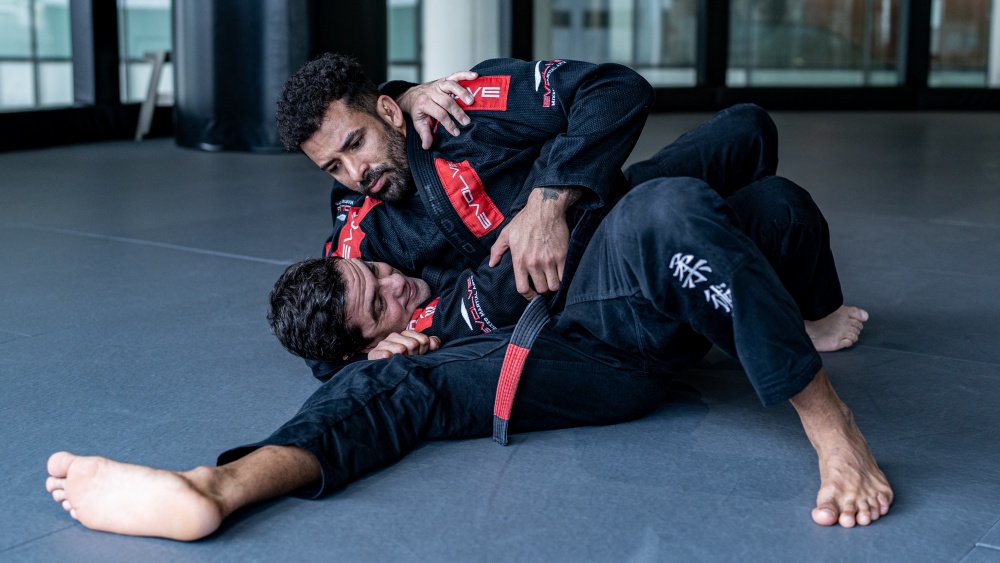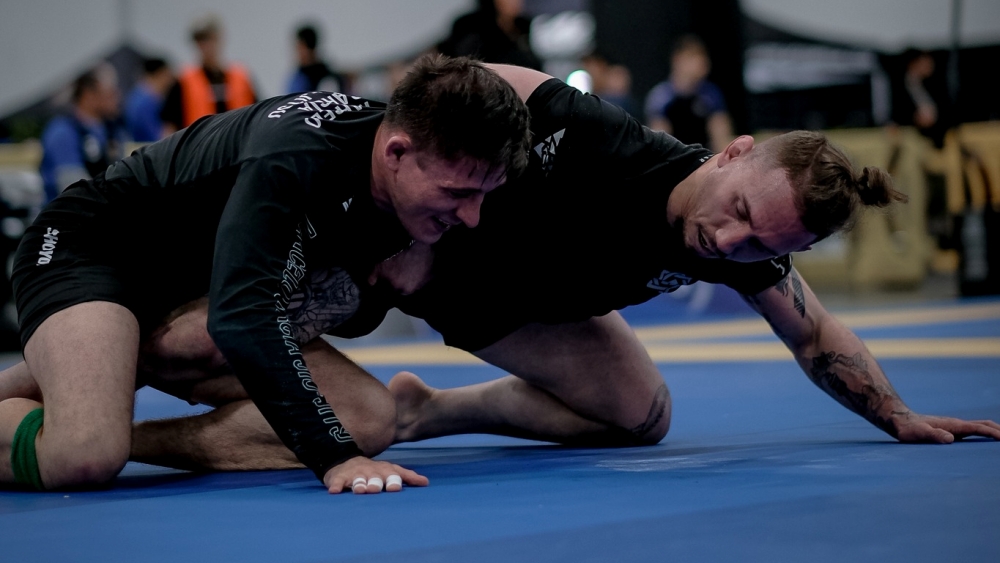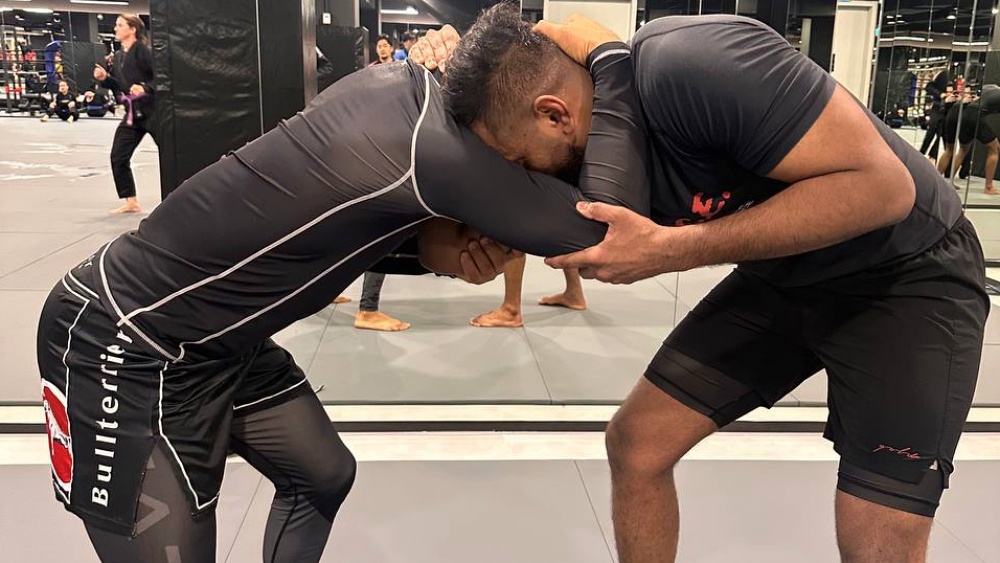Positional dominance is one of the most fundamental characteristics of not just Brazilian Jiu-Jitsu but in any grappling martial art. Regardless of style and approach, you must use your body in such a way that you can control an opponent’s movements and escapes. Today we’ll talk about a powerful yet underrated technique, the kesa gatame or scarfhold pin.
What Is The Kesa Gatame
The kesa gatame is a pinning technique that’s usually considered a variant of side control. It is where you trap the opponent’s upper body as you control an arm with your legs based out. Your torso lays flat towards the opponent’s midsection or chest.
There are many types of kesa gatame pins. Two of the most common ones are the standard kesa gatame (where you loop your arm around the opponent’s head) and the kuzure kesa gatame (you underhook the far side instead of grabbing the head).
Benefits Of Using The Kesa Gatame
The main benefit of the kesa gatame pin is its pinning ability. Once you secure your grips, escaping the position becomes extremely difficult, so much so that even smaller grapplers can use it to control much bigger training partners. It is also an excellent transition once you pull off a takedown or throw. If you watch judo or sambo matches, the one who completed the throw will likely move to kesa gatame to hold the opponent down on the mat.
Another key trait of the scarfhold or kesa gatame is it serves as a good follow-up position to the standard side control pin. Let’s say the pinned opponent starts to shrimp out from the bottom position; you can transition to kesa gatame to flatten them out and reestablish the pin.
Note that while kesa gatame and side control are similar, both have their own strengths and weaknesses. Side control is structurally more stable because your body faces straight down the opponent’s chest. On the other hand, kesa gatame is the more suffocating pin, as most of your weight is directed towards the opponent’s upper body. Both are robust techniques, and it is recommended that you use both.
Attacks From Kesa Gatame
In this video, BJJ black belt Eli Knight shares his submission system from kesa gatame. Attacks from kesa gatame are mainly focused on armlocks. Since the scarfed arm is placed just in front of you, it will be our prime target for submissions. Of course, variations of chokes/cranks are available here, but they are fewer and far less practical.
The armlocks you apply will greatly depend on the positioning of the scarfed arm. If the arm is near your torso, you can attack the straight armlock by pinning the arm down, using your leg as a counterpoint to hyperextend the arm.
If the opponent tucks the arm near their body, you can attempt the Americana by placing your near leg on top of the bent arm while grabbing the head as you scoot your hips back. You can also apply chest compressions from here. The first variation is where you move your body upwards to pin the chest as you squeeze. The second variation is where you grab the opponent’s leg on the same side as you bring your legs near each other.
There are also several attacks you can do from kuzure kesa gatame. Aside from the techniques mentioned above, you can also perform submissions like the armbar by stepping over the opponent’s head. If the opponent decides to push your head away, you can catch the arm, force it to the mat and perform the Americana lock. If the opponent hugs your chest, you can step your leg near their head and attack their far arm using the arm crush.
Eli also demonstrates attacks from other variations of kesa gatame, like the pillow scarfhold and reverse scarfhold. Please feel free to study these techniques to round out your understanding of the positions.
Maintaining The Pin
The secret to a successful attacking sequence is knowing when to pin and when to attack. It is recommended that you first pin the opponent down so that you have enough time to use submissions. It is not a good idea to attempt submissions while the opponent is still mobile because you might compromise your position, giving them opportunities to escape. As a general rule, control them using pinning techniques and, from there, use the most appropriate moves to force a submission.
Remember that while the kesa gatame pin is effective regardless of rank, you can still get countered if you are not careful. Be mindful of your body position, and always be wary of backtakes and reversals from your opponent. It is a smart approach to flow from one pin to another so that you can reposition your body correctly without compromising your position.

Drill the position with mastery in mind. Start by drilling with little to no resistance and slowly add common counters once you become more experienced. The kesa gatame pin is applicable in both gi and no-gi, so you are definitely getting a lot of bang for your buck with this technique.
The submissions we highlighted in this blog are a showcase of what you can attempt from the position. If you are a beginner, you don’t have to master all the submissions we discussed. Pick 1 or 2 techniques from each variation and study their underlying principles. For starters, the leg Americana and pinned armbar are friendly starting techniques for white belts as they are easy to do and do not require many steps to pull off. Add more techniques to your repertoire as you improve.
Conclusion
The kesa gatame is an amazing position that you should explore. This is one of those techniques that will stay with you up until the black belt level and is a solid building block to a strong top game.
You may also like:
















